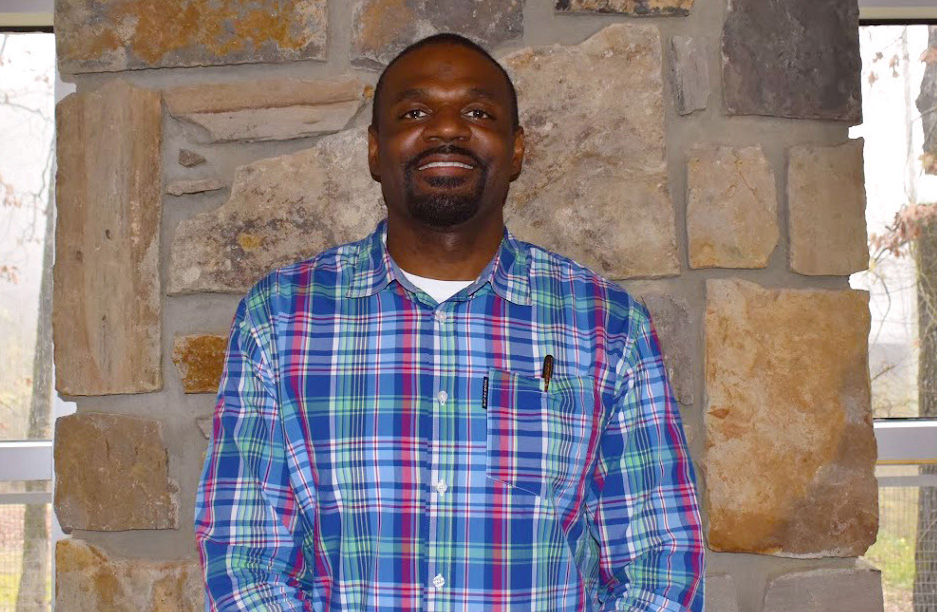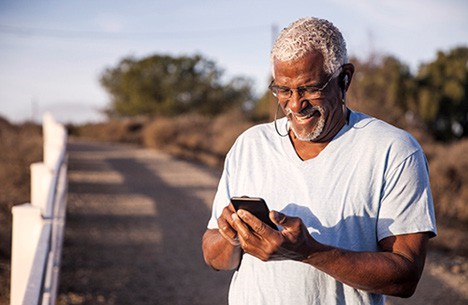Ask the Specialist: Home Activities with Therapeutic Benefits
By: Maritza Dominguez, PT, CBIS

Many brain injury survivors report having a “loss of self” or purpose once they return home. It is important to practice home management skills to continue the benefits of therapy. Aside from exercise routines, therapists may prescribe daily activities for survivors to complete in the home environment. Because they require “dual-tasking” (where a physical task is coupled with a cognitive task), those daily chores or to-do’s can be therapeutic.
For example, unloading the dishwasher not only works on cleaning the kitchen, but also on memory, sequencing, planning, processing; all higher executive skills required in the “outside world.” From a mobility standpoint, that very task is working on negotiating around obstacles, gait, balance, reaching, and strength.
It would be a good idea to think of each room in the home as a therapeutic area. For instance, think about all the physical and mental steps doing laundry requires— carrying the clothes basket, sorting clothes, deciding the water amount and temperature, loading and unloading the machine, folding, and putting the clothes away. It may be a somewhat boring chore, and it may take all day. However, at the end of this task the survivor has not only helped around the home, but they have worked on making improvements in their balance, coordination, walking, memory, safety and judgement.
There are many other ways to incorporate therapy outside of the home as well. Playing outdoor games such as bocce ball and baggo improve grasp/release, hand-eye coordination, dynamic balance and from a social perspective— time with friends and family, turn-taking, and sportsmanship.
So, the next time extended hours on the couch seem all too routine, get off the couch and be- gin your therapy session right in the comfort of your home! Not only do completing household chores assist in filling the survivors’ schedule, but more importantly, finishing meaningful tasks instills a sense of purpose.
Want to suggest a topic? Email us at braininjury@uams.edu.
Survivor/Caregiver Stories: Joe Page: Traumatic Brain Injury Survivor
By: Kimberly Lamb
TBI doesn’t have a certain criteria. It doesn’t have a certain group that it identifies – the richest and poorest areas in the state are impacted by traumatic brain injury.
Joe Page

In October 2012, Joe Page, who was serving as a deputy warden at the Varner Unit of the Arkansas Department of Corrections, suffered a traumatic brain injury (TBI) when he was hit by an inmate and knocked unconscious. He was transported to Jefferson Regional Medical Center in Pine Bluff where he was stabilized, then he was moved to Baptist Health Medical Center in Little Rock.
Joe spent a little over a week in the ICU before he became aware of his surroundings. Recalling that period of time, he said, “I was kind of walking, but not talking, disoriented, and couldn’t stand up by myself.” His family was told that he needed to be transferred to a nursing home, but due to aggression, which is a common symptom of TBI, it wasn’t an option. With no prospect for real improvement, his mother, a registered nurse, began making plans to take him to live with her in Texas. This is where Joe’s story takes a turn for the better.
Joe woke up from his previous state and began asking questions as if nothing had happened to him. He had amnesia and could only remember going to work on the day of his injury and waking up at the hospital. As Joe regained clarity, he was transferred to NeuroRestorative – Timber Ridge in Benton.
The Rehabilitation Process
At Timber Ridge, Joe began to understand the seriousness of his injury, and he became determined to heal from it. During his two-month stay, he attended training every day, worked out at the gym, and developed an interest in weight lifting. Through the use of a simulator car, he learned how to drive again. He spent time walking the grounds of the facility and observing the deer.
As he grew stronger, Joe became aware of how far he had come in his treatment for traumatic brain injury. He said, “I almost died. I almost wasn’t sane again.” In his healing process, he began to reach out and help others who lived at the Timber Ridge facility.
Determination
The traumatic brain injury changed Joe’s outlook on life. He said, “You can become complacent about things like education. Things that weren’t always hard for you are affected by brain injury.” Before his accident, Joe had completed a bachelor’s degree in criminal justice. He had planned to attend graduate school, but after he got hurt, he knew he had to prove to himself and others that he could do it despite the challenges presented by the injury. Joe enrolled in a master’s program in criminal justice. Using crucial skills that he learned at Timber Ridge, such as taking notes, he finished his degree with a 4.0 GPA.
Joe also excelled in his career. In 2016, he was promoted to warden at the Tucker Unit, Arkansas Department of Corrections. In addition to his warden position, he currently serves as an adjunct professor at two Arkansas universities and a business entrepreneur. Joe’s love for the outdoors has also grown into competitive fishing with the Walmart Bass Fishing League Series and an interest in horseback riding.
Through strength, courage, and determination, Joe has made a full recovery. He is bringing those same qualities to the forefront as he works to stand in the gap for others with TBI.
Leadership
Through his own traumatic brain injury experience, Joe has become a proactive leader and voice for TBI survivors in Arkansas. He now serves as a member of the newly-formed TBI Advisory Board Workgroup, which is housed at the University of Arkansas for Medical Sciences (UAMS) and funded through a small grant from the Administration for Community Living (ACL), Traumatic Brain Injury State Partnership Program. The goals of the workgroup are to develop a leadership board; identify funding sources to help TBI survivors, their caregivers, and family members; and to develop a state plan to increase resources and services, especially within the rural, underserved populations of Arkansas.
In March, Joe traveled to Washington D.C. to meet with ACL leaders and attend “Hill Day” sponsored by the National Association of State Head Injury Administrators (NASHIA). During that trip, he was part of a delegation that reached out to Arkansas’ congressional leaders where he was able to share his story and seek support for the TBI population in the state.
Joe said, “The TBI Advisory Board Workgroup is the best thing to happen to Arkansas. The group is proactive, and I’m proud of the accomplishments that we are making. I see where we are lacking as a state and what we need to do. Not every brain injury story has a happy ending like mine (alive and aware).”
Reflecting on how TBI impacts the state, Joe believes that, “TBI doesn’t have a certain criteria. It doesn’t have a certain group that it identifies – the richest and poorest areas in the state are impacted by traumatic brain injury. TBI puts you on the same playing field. We all have the same options and the same available care. The more progress we make, and the closer we get to using technology to our advantage, we can reach more people.” The meetings in Washington D.C. opened the door for us to share, keep communication lines open, and make our leaders aware of what we are trying to do for our state.”
Joe’s Advice to Others Healing from TBI:
From his experience at Timber Ridge to living daily life, Joe understands the role of rehabilitation in the healing process. Joe said, “My neighbor recently had a stroke, which caused problems similar to those I experienced. I was able to coach him and remind him to take it easy and not to do too much. I reminded him to crawl before he tried to walk. Now, he is 95% better. What I went through in my recovery process allows me to help and give this kind of advice.”
Other tips from Joe include:
- Remain patient while going through rehab.
- Set obtainable and realistic goals.
- Make progress one step at a time – for example: walk, walk brisk, jog, then run.
- Set the bar, and keep setting the bar until you are where you want to be.
- Don’t let your mind get ahead of your body in the healing process because you could injure yourself worse.
Joe’s final word of advice, “Remember the importance of family support. My family support network was a huge part of my recovery.”
Want to share your story? Email us at braininjury@uams.edu.
How to Access MY Social Security on the go!
By: Phylis Dills, Social Security Public Affairs Specialist

Smartphones have been in our lives for over a decade and have changed the way we interact with each other. Social Security is at the forefront of technological advancements, making your online business with us easier and more secure.
About a third of the visitors to SocialSecurity.gov use their smart phones to learn about our programs, find answers to their questions, and access our online services. Now you can access your personal my Social Security account on the go or from the comfort of your home.
By visiting www.socialsecurity.gov/myaccount, you can:
- Request a replacement Social Security card, if you meet certain requirements.
- Check the status of your application or appeal.
- Get your Social Security Statement to review estimates of your future retirement, disability, and survivors benefits.
- Check your earnings every year to verify the amounts that we recorded are correct.
- See the estimated Social Security and Medicare taxes you’ve paid.
There are even more things you can do with my Social Security if you’re receiving benefits. You can get a letter that verifies your benefit amount, check your benefit and payment information and your earnings record, and change your address and phone number. You can also request a replacement Medicare card, confirm changes to your direct deposit information, and even get a replacement SSA-1099 for tax season.
We’re continuing to improve mySocial Security all the time and make more services available online. Residents of the District Columbia and more than 20 states can now request a replacement Social Security card online using my Social Security. It’s an easy, convenient, and secure way to request a replacement card online.
To request a replacement card online, you must:
- Have or create a my Social Security account.
- Have a valid driver’s license in a participating state or the District of Columbia (or a state- issued identification card in some states).
- Be age 18 or older and a United States citizen with a domestic U.S. mailing address (this includes APO, FPO, and DPO addresses).
- Not be requesting a name change or any other changes to your card.
Securing today and tomorrow can start now. Putting you in control of your future is a priority for us. Visit www.socialsecurity.gov/myaccount today to learn more and to sign up for your own account.
Please be aware that past newsletter issues may contain outdated information. For the latest updates on resources and events, visit our website or contact us at braininjury@uams.edu with any questions.
